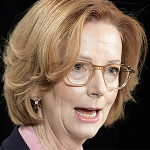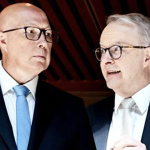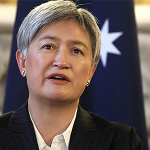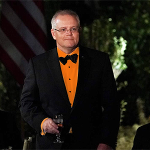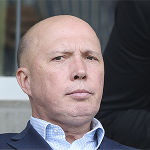Federal spending is set to increase to its highest level since the mid-1980s, pandemic spending aside, at 26.6 per cent of GDP. The states and previous governments share some of the blame, but Labor’s federal fiscal strategy is prolonging the cost-of-living crisis with no relief in sight.
If we assess Labor’s fiscal strategy on the basis of its economic impacts, there are three key elements.
First, a blank cheque for energy policy. This is killing our household budgets despite the Minister for Energy claiming otherwise. Even former ACTU President and Labor MP Jennie George agrees that Bowen’s energy policy is ‘powered by wishful thinking’. There is simply no Plan B.
Bowen’s strategy is to double down while encouraging rent-seeking.
And it won’t work no matter how much the Teals shout about it.
Excellent piece by @adamlmorton
The next decade is what matters for action on climate & replacing our ageing coal-fired power fleet.
Nuclear just cannot deliver in that time.
We need energy policy that’s based on the facts. Not just a press release.https://t.co/7Y5iBaUUKG
— Allegra Spender (@spenderallegra) August 20, 2024
Second, targeting spending to win votes from the few at the expense of the rest of us has turned the honourable intentions of the NDIS into a rent-seeker’s paradise. The NDIS has far-exceeded the role originally intended by the Productivity Commission. The doubling of existing funding for the care sector by providing an additional $6.5 billion (as recommended by the Commission in 2011) has blown out of all proportion and is now some $44 billion.
And third, ‘below the line’ spending on social housing and wiping $3 billion in student debt may not impact budget ‘surpluses’, but it certainly doesn’t cool inflation. And those Gen Xers who have since paid off their HECS debts and Supplement Loans have contributed twice, as have taxpayers who did not attend university.
And the housing portfolio at the federal level alone is set to spend a total of some $22 billion on social housing since the Albanese government came to power in 2022.
Building more homes will lead to more affordable housing. It’s that simple. pic.twitter.com/MvkZlKDZ5q
— Clare O’Neil MP (@ClareONeilMP) August 20, 2024
Building more homes means government competes with industry, rental returns decrease and investors put their money elsewhere. Add to this the Greens and state Labor governments giving tenants more rights than landlords and owning a rental property becomes a mug’s game.
Instead of building houses, government spends our money on palatial headquarters and salaries for administrative staff. Ultimately, this leads to less housing and a stunted construction industry, leaving the economy stuffed.
If the government was serious about building houses, fiscal policy would be focused on reducing interest rates and developing an economy that encourages investment in housing. Given recent events with the CFMEU, bringing back the Australian Building and Construction Commission would make sense, too.
Instead, Labor’s approach is designed to make many of us government tenants while encouraging rent-seeking in the building and construction sector.
Further, the Future Made in Australia strategy chucks in an additional $22.7 billion. How we will compete with China in this space is anybody’s guess. Or more wishful thinking. And more rent-seeking.
These measures are supposedly budget-neutral because the accounting treatment simply converts public money into assets. But it still pumps up inflation.
Never mind the future maintenance bill or the costly and patchy impact of Labor’s previous blank-cheque infrastructure projects like the NBN.
It’s beginning to look a lot like Rex Connors’ Whitlam-era fiasco all over again.
In the mid-1980s, at least, the Hawke government had a vision to restructure the Australian economy to meet the challenges of globalisation.
But rather than become a contemporary Bob Hawke, Albo has focused Labor’s fiscal policy on winning votes through targeted spending that benefits the few while making things worse for the many.
The Reserve Bank of Australia’s role is to focus on headline inflation. RBA Governor Michele Bullock has indicated that inflation is not coming down because Labor’s fiscal strategy is at odds with the RBA.
This means there is unlikely to be an interest rate cut until 2025.
In real life, however, headline inflation does not indicate just how hard the cost-of-living crisis is hitting ordinary people in the cost of food and shelter. A packet of sliced cheese that used to cost $4.99 now costs $7.99 and olive oil that used to cost $18.99 now costs $45. Mortgage repayments have chewed up every extra cent we had before Labor came to power.
I could keep going but I am sure readers know how it is at the moment.
The ‘recession we had to have’ under Keating was arguably the pain we had to experience as a consequence of our economy being restructured. It sucked at the time but the overall improvements in the economy transformed us.
It is difficult to see what modern Labor’s fiscal policy is trying to do other than to send us broke.
It begs the question: What magical economics potion is Labor drinking?
Under the Albanese government, we may well be heading for the recession we didn’t have to have.
Dr Michael de Percy @FlaneurPolitiq is a political scientist and political commentator. He is a Fellow of the Royal Society of Arts, a Chartered Fellow of the Chartered Institute of Logistics and Transport (CILTA), and a Member of the Royal Society of NSW. He is National Vice President of the Telecommunications Association, Chairman of the ACT and Southern NSW Chapter of CILTA, and a member of the Australian Nuclear Association. Michael is a graduate of the Royal Military College, Duntroon and was appointed to the College of Experts at the Australian Research Council in 2022.


